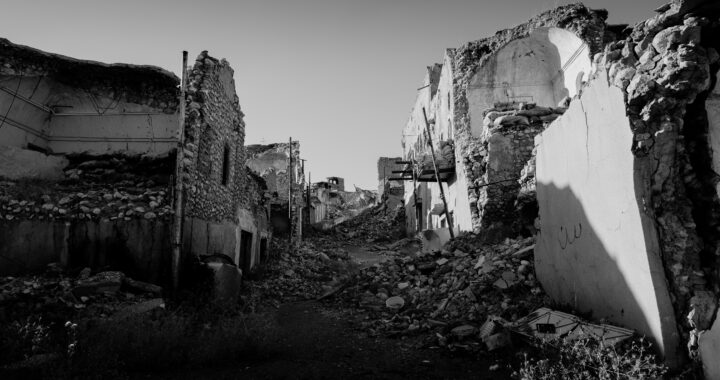The Institute of Economic Peace (IEP) recently compiled and published the 2020 Global Terrorism Index, using data from the Global Terrorism Database (GTD) to study terrorism’s impact on 163 countries. The GTD dataset, maintained by the National Consortium for the Study of Terrorism and Responses to Terrorism (START) at the University of Maryland, includes over 170,000 terrorist incidents from 1970 to 2019. The top 10 countries most affected by terrorism are Afghanistan, Iraq, Nigeria, Syria, Somalia, Yemen, Pakistan, India, the Democratic Republic of Congo and the Philippines. However, according to the Index, deaths from terrorism have fallen globally for five straight years – with 2019 showing a 15 percent decrease from the previous year, even as instances of far-right terrorism have risen in many western countries. This decrease is attributed to the decline in the level of violence in the Middle East and the disintegration of Daesh in Iraq and Syria. The four groups primarily responsible for the most deaths in 2019 were the Taliban, Boko Haram, Daesh and Al-Shabaab.
The collapse of Daesh’s caliphate in 2017 and ongoing counter-terrorism operations in Iraq and Syria have reduced the impact of Daesh-related terrorism around the world. As a result, the number of fatalities caused by Daesh are at the lowest since 2013. Even so, countries are still struggling with the repatriation of their nationals who went to Syria to become foreign terrorist fighters (FTF) for Daesh. At the same time, IEP’s analysis found that terrorism-related deaths have decreased in most regions like the Middle East and North Africa (MENA). Some regions experienced serious increases in terrorist activity such as sub-Saharan Africa and South Asia. Sri Lanka, for instance, saw a large increase in deaths from terrorist violence due to the Easter Sunday bombing attack perpetrated by Daesh-linked perpetrators which saw 266 people dead. Nevertheless, radical Islamist-related terrorism is declining globally.
New trends are emerging with the rise of far-right and white supremacist movements. Several western countries are facing a serious increase of far-right terrorism, by as much as 250% in the last five years. There were 49 far-right terrorist incidents with 89 deaths in 2019 – of which the Christchurch mosque attack in New Zealand accounted for 51. While much of Western counter-terrorism efforts are focused on jihadi terrorism, far-right terrorism is proving to be a growing threat in recent years due to the shifting political landscape, with increased polarisation and divisive populist movements encouraging the use of violence to achieve political ends.
Although terrorism-related deaths have declined in Afghanistan, this remains the country most affected by terrorism, followed by Iraq, Nigeria, Syria and Somalia. The Afghan economy is severely affected by terrorism. The imminent withdrawal of US troops suggests that the threat of violent Islamist terrorism will not subside. Multiple ongoing insurgencies fuel the terror. The growing presence of Daesh’s chapter in the Khorasan – the Islamic State Khorasan Province (ISKP) – looms over the peace talks between the Afghan government and Taliban representatives in Qatar. As Daesh Central struggles to recover itself in Iraq and Syria, many of its fighters have decamped to join ISKP. ISKP has been responsible for most of the terrorism-related fatalities in Afghanistan, India and Pakistan, including an attack in Kabul University this year which left 22 students dead and 22 others wounded.
According to IEP’s findings, Malaysia ranked 76 out of 163 nations listed in order of those most affected by terrorism, while the Philippines, Thailand, Myanmar and Indonesia ranked 10, 21, 25 and 37 respectively. Religious extremism remains the main driver of political violence in the Philippines and Indonesia. The three deadliest terrorist groups in the Philippines are the communist New People’s Army (NPA), Daesh, and the Abu Sayyaf Group (ASG). ASG, which is also recognised as the Islamic State of East Asia Province, was responsible for this year’s deadliest incident in the Philippines which saw twin bomb attacks detonated in Jolo, in the southern Philippines province of Sulu, killing 14 people and wounding 25 others. Even as the Philippines security forces are actively carrying out anti-terrorism operations throughout the south of the country, Daesh-affiliated radical groups remain active in recruiting and training new members to carry out more operations and launch attacks.
The Covid-19 pandemic was expected to provide terrorist groups with an opportunity to regroup, plot attacks, drive narratives that encourage divisiveness, and increase recruitment. However, the pandemic has also proven to be disruptive and presented operational challenges. For instance, lockdowns in Indonesia have caused Daesh supporters and sympathisers to suffer a severe loss of income, which resulted in declining revenues for pro-Daesh cells in the country, making it difficult to carry out operations. The lockdowns have also reduced crowds, making them less attractive as attack targets.
But some primary drivers of terrorist activity remain unchanged. Grievance and weak rule of law are associated with terrorism across the board, with growing socio-economic and political instability a reflection of social disenfranchisement and exclusion. Therefore, countries engaging in counter-terrorism and counter-radicalisation efforts must still consider improving social and economic conditions to diminish motivations for joining any violent political movements. A key challenge for developing countries remains addressing existing schisms in the communal fault lines concerning racial or religious tensions, and tackling corruption, all of which fuel sympathies for terrorist movements.

